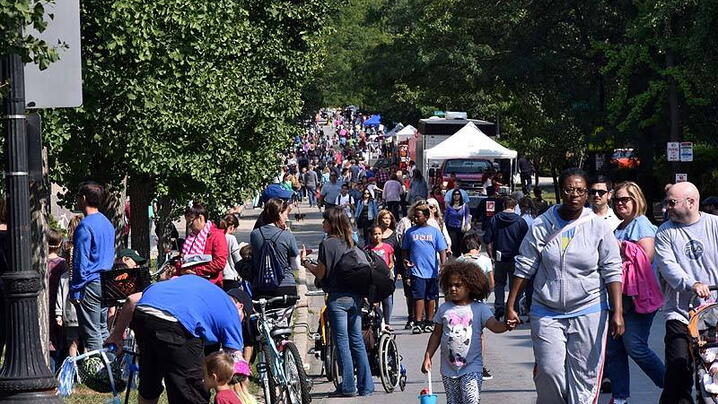
Healthy Living initiatives come in all shapes and sizes. Communities may choose to offer educational sessions, provide resources for residents and visitors, hold events, and outline the general structure of programs aimed at helping those who choose to be healthier, live more sustainably, and make better choices about their lifestyle and how to engage within their community.
The overall purpose of these initiatives is to encourage residents and visitors to learn about healthy living habits and eventually enable them to maintain these habits long term. However, responsibility falls on the local government not only to provide resources and encourage acceptance of them, but also to change the infrastructure of the targeted area to BE more sustainable and lend itself to healthy living. One way that any area can cater to a healthier living initiative is to become more walkable. Almost anyone can take part in the “walkability” of a town or city no matter how rural or urban. Let’s explore more about walkability.
Walkability is an important part of sustainability – an area’s walkability is a reflection of so many other sustainable factors that take part in a municipality’s makeup. Accessibility, road and walkway conditions, public transportation program safety and accessibility, general safety and land use patterns all contribute to an area’s walkability. Thinking about creating or modifying all of these aspects in an urban area is a large part of sustainable design and something that holds many benefits for the community involved in such an area. Economically, a town or city can benefit from having a more walkable environment. The presence of sidewalks and other walking facilities is shown to increase property value and promote tourism. Sidewalks and connected, well-maintained pedestrian networks allow citizens the ability to safely and conveniently patronize local shops, businesses, and restaurants.
Walk Score (http://www.walkscore.com) is a good starting point to see how walkable your community is. The site lets you enter your location and see what amenities are close by, including a general Google map of the area including restaurants, activities and stores. It’s a very interactive site and helpful for gathering information about and providing perspective on your area’s general “lay of the land”.
Once you have a good sense of how walkable your community is, it’s time to act. What do your residents and visitors want to see? What ways can walking in your area become more enjoyable – and therefore potentially reduce traffic, promote an active lifestyle and reduce the trend towards a sedentary lifestyle? Environmentally, increasing walkability can also have positive impacts on the community. Walking or biking can decrease car travel and thereby decrease harmful auto emissions. The University of Delaware has created “Policy Initiatives for Walkable/Bikeable Communities”, available here, which provides policy ideas about how to pursue creating healthier and more active communities.
Phoenix is a good example of a municipality that has tried to become more walkable. In 2011, the Department of Housing and Urban Development awarded the city a $2.9 million Sustainable Communities Grant for a project called Reinvent PHX. The city wants to promote walkable, mixed-use neighborhoods and the grant is supposed to help it do just that. The project has three phases – first, officials will work with community members from each of the five districts to establish a unique vision for that neighborhood. That effort will be followed by a design phase that introduces potential changes in infrastructure and land use. The last step involves finding the funds to implement these designs and rewriting municipal codes and regulations to facilitate the development. Learn more about Reinvent PHX here.
Implementing just a few programs to improve walkability can have big results for a community. In the move to “go green,” increasing your community’s walkability can have a domino effect that will lend itself to more improvements as time goes on and the community becomes more passionate and involved with greening and improving the livability of their communities. The Green Towns website is a great resource for seeing what other communities have done to take part in sustainable initiatives at the local level. Healthy living programs can seem overwhelming when you look at the “big picture”. That’s why it might be beneficial to choose one aspect of a program, like walkability, and work on implementing it – start with one piece of the puzzle and eventually build towards a more walkable, more sustainable, healthier community.
New, Reduced Membership Dues
A new, reduced dues rate is available for CAOs/ACAOs, along with additional discounts for those in smaller communities, has been implemented. Learn more and be sure to join or renew today!
